Georgia boasts no shortage of beautiful scenery and landscape as well as historical landmarks and exhibits. Much of this beauty and history can be seen in the protected areas of the National Parks in Georgia.
Eleven national parks, areas, and sites can be found in this history-rich state of the South.
Some of these parks and historical sites are reviewed below and grouped together by their region of the state.
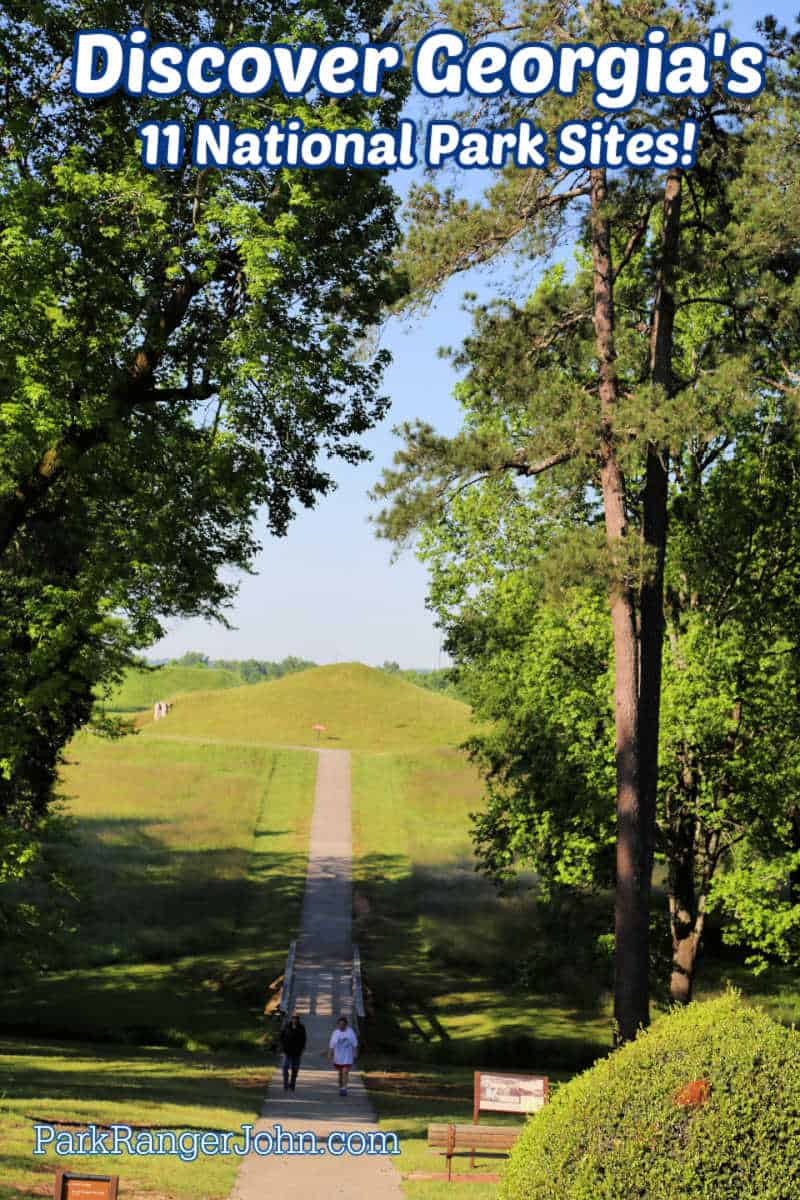
National Parks in Georgia
The Peach State is filled with great historical parks and state parks.You can learn more about Native American history in this area, Camp Sumter, and more.
Don't miss visiting the visitor centers to learn more about each of these parks and learn more about the local history.
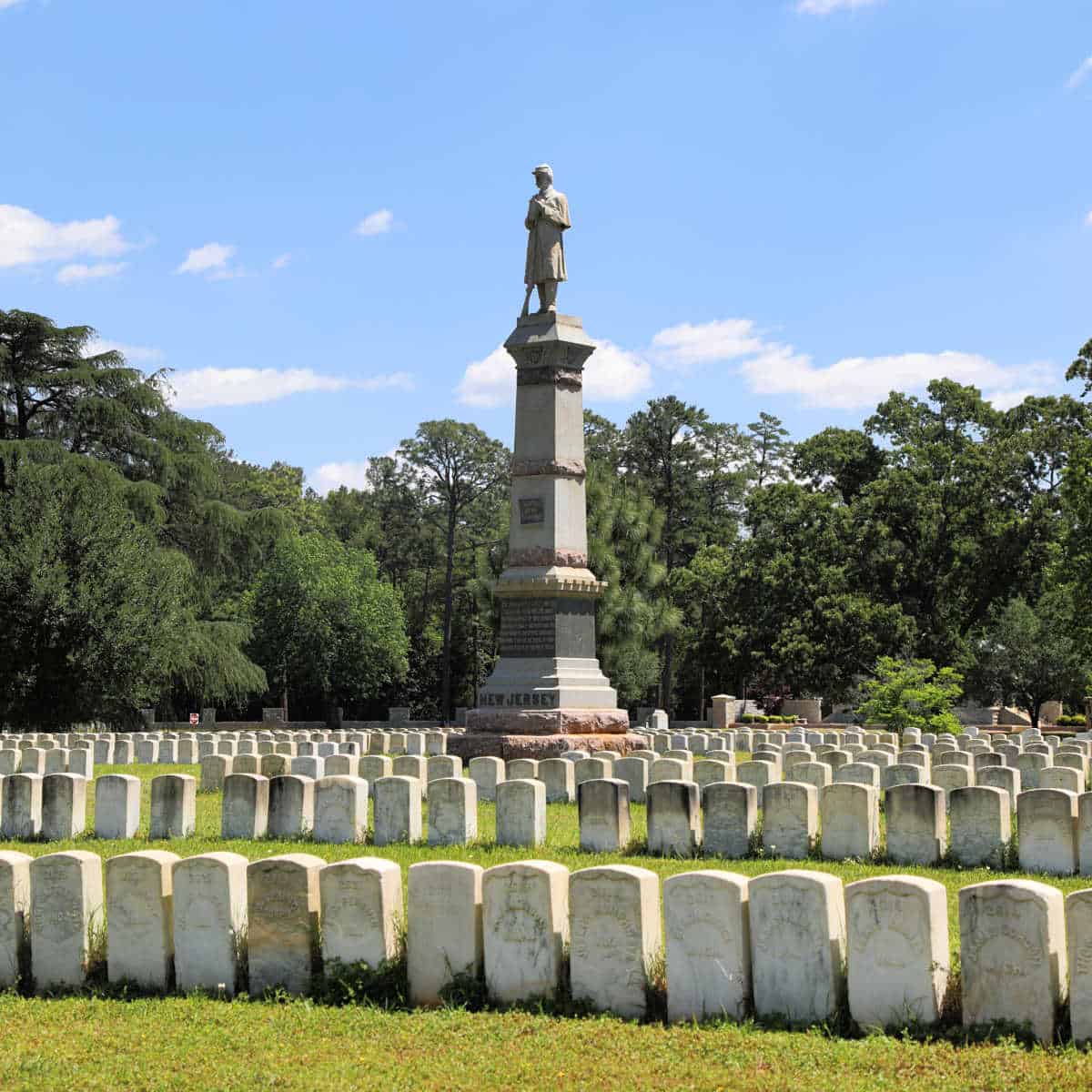
Andersonville National Historic Site
Top Things to do - Audio Tour, visit the National Prisoner of War Museum, explore the site of Camp Sumter and Andersonville National Cemetery
Lodging - No lodging is available at the park. The closest hotels can be found in Americus and Montezuma, Georgia approximately 10 miles from the park.
Camping- There are no campgrounds within the park
Park Address - National Prisoner of War Museum, 760 POW Road, Andersonville, GA 31711
Andersonville NHS is located in Southwestern Georgia approximately 55 miles southwest of Macon. The park is open year-round and offers the opportunity to tour a historic prison site, the National Prisoner of War Museum, and the National Cemetery.
During the Civil War, the Confederacy built a prison to hold captured Union Soldiers that was called Camp Sumter. The prison was also known as Andersonville Prison after a local community nearby.
The prison was infamous for the horrible conditions that inmates suffered through. The conditions resulted in nearly 13,000 men passing away by the close of the Civil War.
During August 1864 more than 32,000 prisoners were held at Andersonville Prison. They suffered through malnutrition, disease, and the heat of a Georgia summer.
Andersonville National Cemetery began as the site of burials for Camp Sumter prisoners. It later became the resting place for people who served in the United States Military.
Andersonville National Cemetery is one of two national cemeteries that is administered by the National Park Service instead of the Department of Veterans Affairs.
The Prisoner of War Museum opened in 1998. The museum focuses on the hundreds of thousands of Americans who have been POWs.
A visit to Andersonville National Historic Site will most likely be somber and educational, leaving you with a sense of pride for the great men who served our country. This site is home to the National Prison of War Museum and the Andersonville National Cemetery.
The site also protects the grounds of the former Andersonville Prison, one of the largest military prisons at the time of the Civil War. This visitor center is a bit intense if I am being honest. Even the Junior Ranger program takes you through some very deep and heart-wrenching tales. Be prepared to feel the emotions at this historic site.
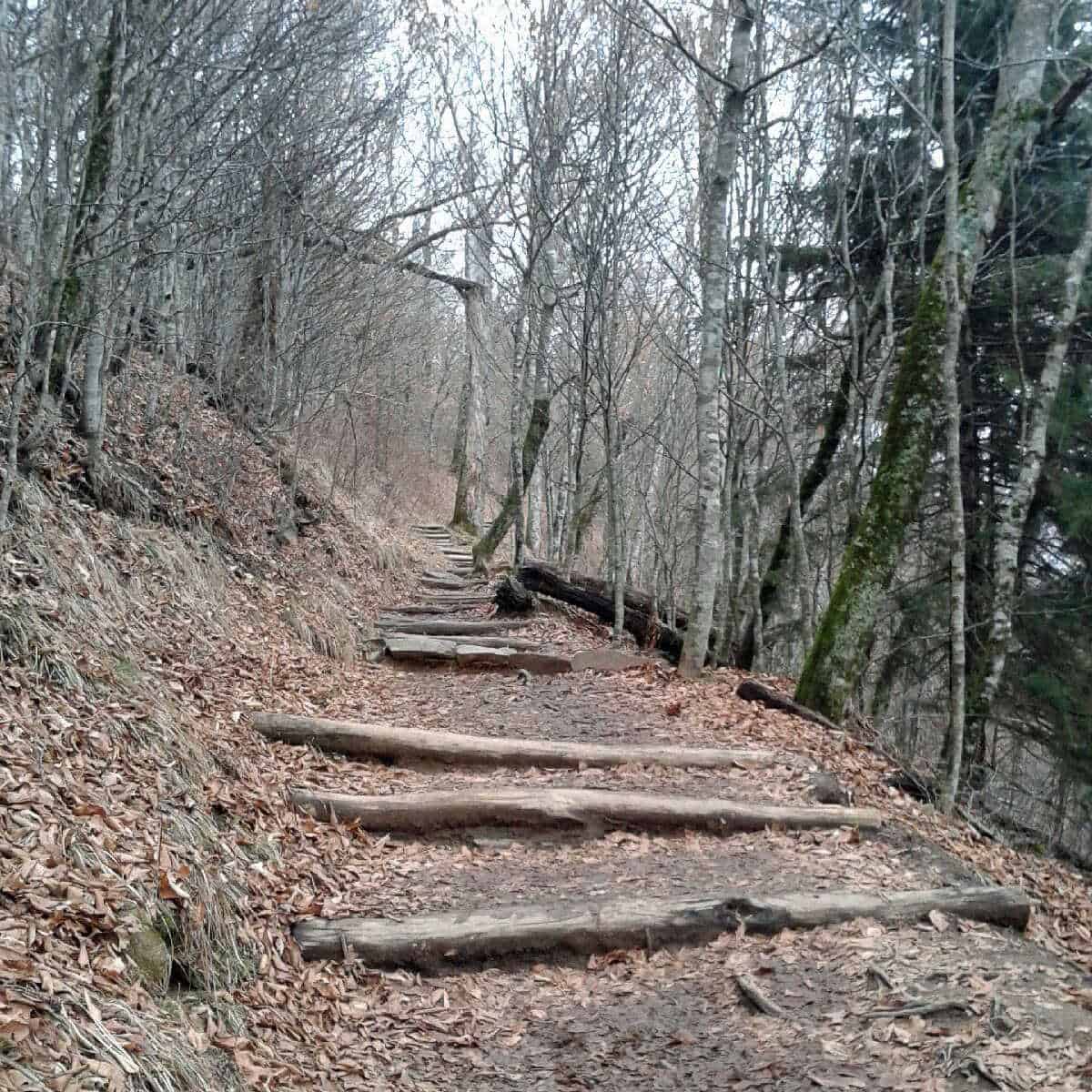
Appalachian National Scenic Trail
Top Things to do - Hiking, Camping, Thru-hiking, Wildlife Viewing
Lodging - Lodging options near the Appalachian National Scenic Trail in Georgia include hostels, shelters, hotels, motels, bed and breakfasts in towns like Blairsville and Hiawassee, and camping opportunities along the trail in the North Georgia Mountains.
Camping- While camping along the Appalachian Trail in Georgia is allowed anywhere, there are shelters and makeshift tent campgrounds that offer amenities such as pit toilets and running water.
Georgia boasts a dozen shelters along the trail, with notable ones including a restored stone house at 4,450 feet elevation on Blood Mountain, which is the highest point on the state's section of the trail. The distance between shelters ranges from 1.2 miles between the Woods Hole and Blood Mountain shelters to 12.3 miles between Gooch Mountain and Woods Hole.
Park Address - Appalachian Trail Park Office, P.O. Box 50, Harpers Ferry 25425
The Appalachian NST travels 78 miles within Georgia. The trail elevation ranges from 2,510 feet up to 4,461 feet.
The Appalachian Trail's most Southern point is Springer Mountain, Georgia which is the southern start of the 2,146-mile trail onward to Maine. Hiking the Appalachian Trail is a dream for many outdoor enthusiasts. Whether you do it for months on end or on weekend trips exploring this trail is a great way to spend time outside.
It is cool to know that almost half of the Appalachian Trail in Georgia passes through the federally designated wilderness.
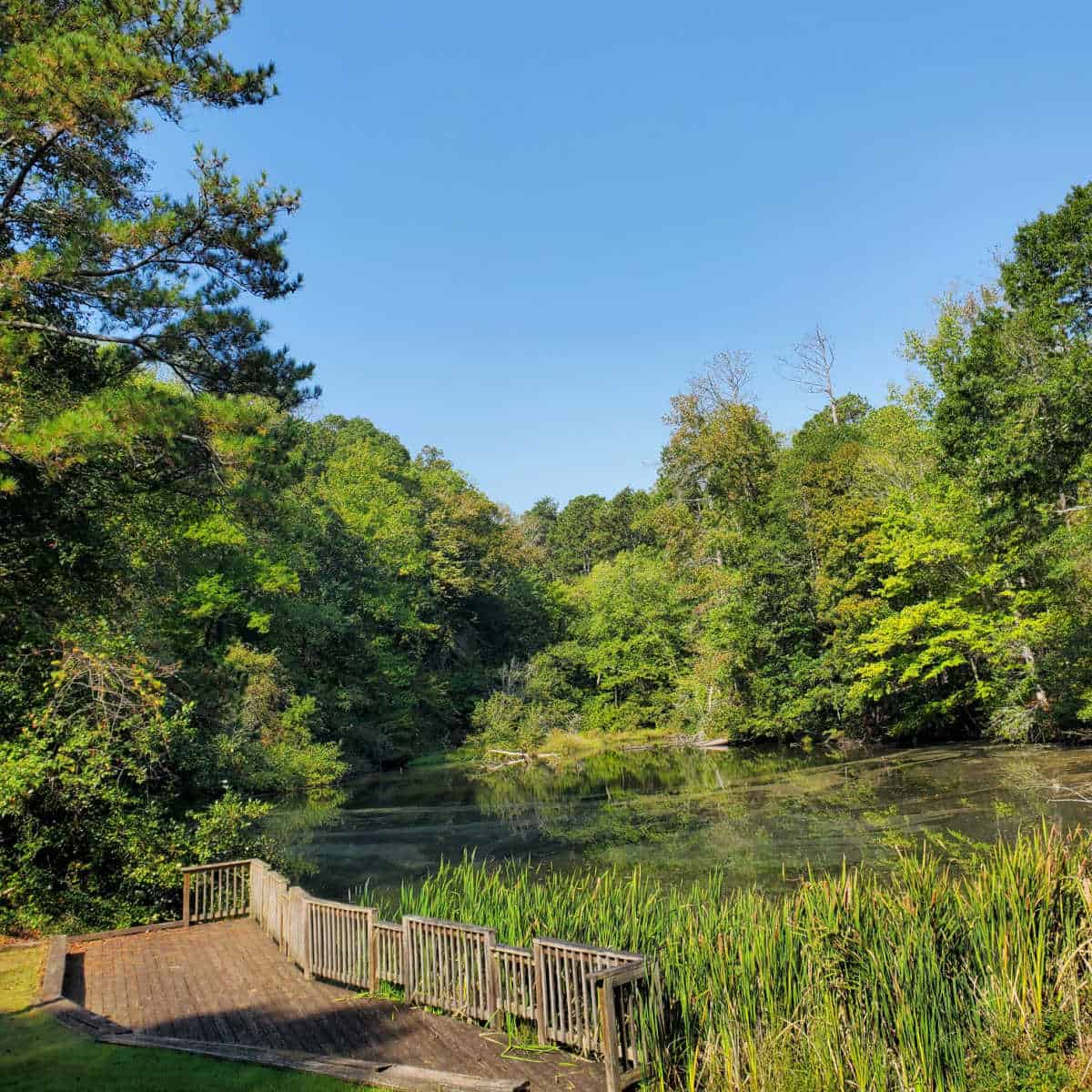
Chattahoochee River National Recreation Area
Top Things to do -Paddling, Cycling, Fishing
Lodging - There are no lodging facilities within the Chattahoochee River National Recreation Area
Camping- Camping facilities may be found at Lake Sidney Lanier, Allatoona Lake, Stone Mountain Park, Georgia State Parks, or Chattahoochee-Oconee National Forest.
Park Address - 8800 Roberts Drive, Sandy Springs 30350
Chattahoochee River NRA is located in Northern Georgia just north of Atlanta. The park covers 48 river miles and is open year-round. The park offers boating, hiking, fishing, and space to relax.
The park visitor station is in the Island Ford Unit of the park. The park is spread over multiple units. If you are planning on spending time on the water you will want to check for the water levels and any water being released from the dam.
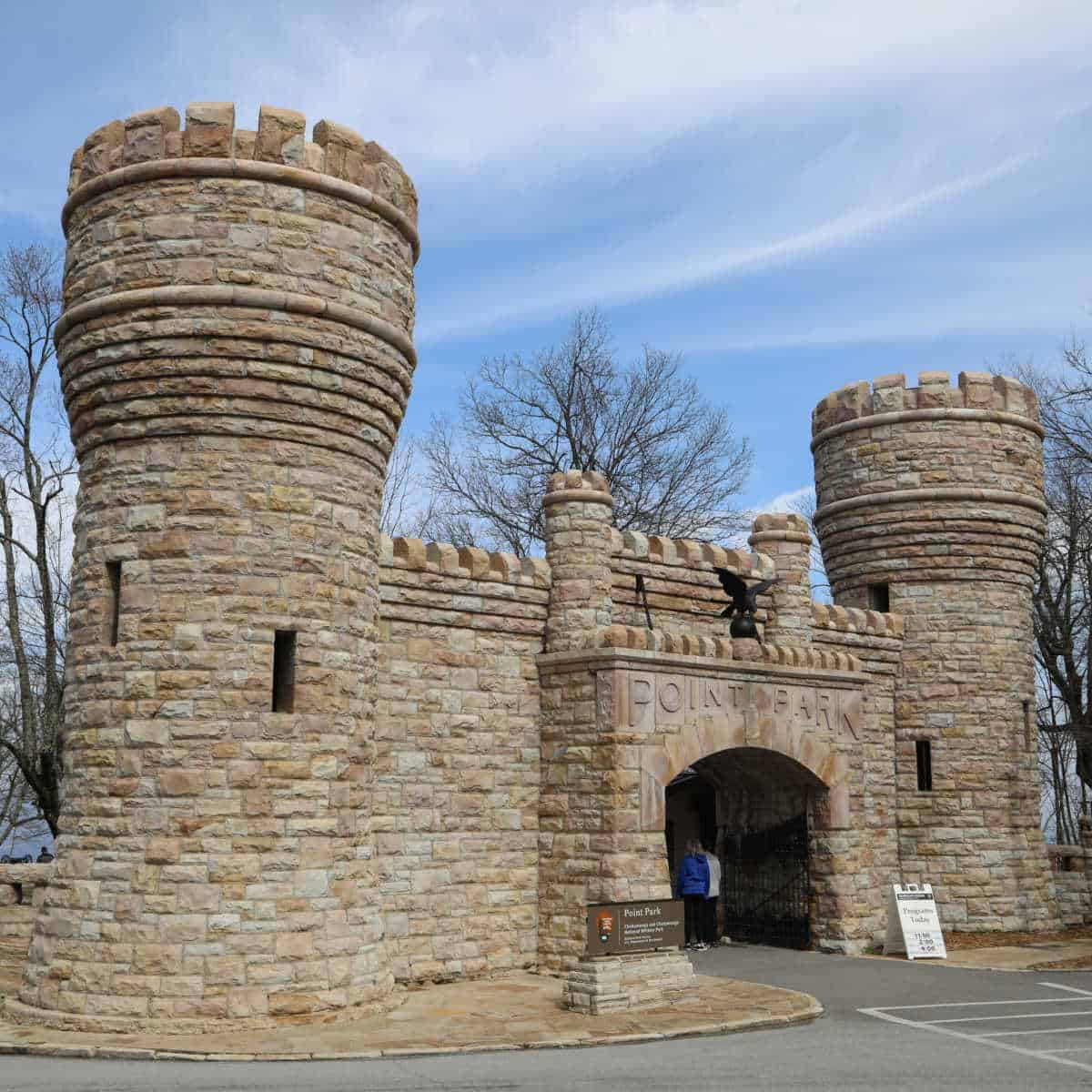
Chickamauga and Chattanooga National Military Park
Top Things to do - Visitor centers, Car Caravan Tours, Hiking and Running, Bicycling, Horseback Riding, Rock Climbing, Paddling and Waterways, Ranger-Guided Outdoor Activities, Picnicking
Lodging - There is no lodging within the park itself. However, there are various lodging options in nearby cities and towns, such as Chattanooga, Tennessee, and Fort Oglethorpe, Georgia.
Camping- There are no camping options within the park
Park Address - 3370 LaFayette Road, Fort Oglethorpe 30742
Located in Fort Oglethorpe, Ga., the Chickamauga and Chattanooga National Military Park, is a historic playground for history buffs visiting Georgia.
The park displays many monuments and exhibits from the Civil War Time. If in the area, be sure to visit the Chickamauga and Lookout Mountain Battlefields.
Be prepared to spend a few hours at minimum exploring these military parks. There are hundreds of monuments and battlefield sites explaining what happened here. The view from Lookout Mountain over the Tennessee and Georgia state line down to the Tennessee River is amazing on a clear day.
Chickamauga and Chattanooga were the first officially established National Military Park in the United States in 1895.
Cumberland Island National Seashore
Top Things to do - Guided Tours, Hiking, Swimming and Beachcombing, Biking, Boating and Kayaking, Hunting, Stargazing, Fishing, Photography, Becoming a Junior Ranger, Camping
Lodging - While there are no accommodations within the park itself, visitors can explore lodging options in nearby areas and towns, such as St. Mary's, Georgia, and Fernandina Beach, Florida.
Camping- Camping options within Cumberland Island National Seashore include Sea Camp Campground and Stafford Beach Campground, both providing access to the island's natural beauty and diverse ecosystems. Additionally, backcountry camping is available with required permits.
Park Address - 113 St. Mary's St W, St. Mary's 31558
Located in St. Mary's, Ga., Cumberland Island is Georgia's largest barrier island. Visit this area almost completely untouched by civilization and explore the ruins of early wealthy settlers of the island. Enjoy pristine undisturbed beaches and catch a glimpse of wild horses that inhabit the island. This Georgia gem is worth the drive down the coast.
You can learn how Georgia's fate was decided in 1742 when Spanish and British forces clashed on St. Simons Island.
To reach Cumberland Island you will need to take a ferry from the mall town of St. Marys, Georgia. The park visitor center is located here off of the island.
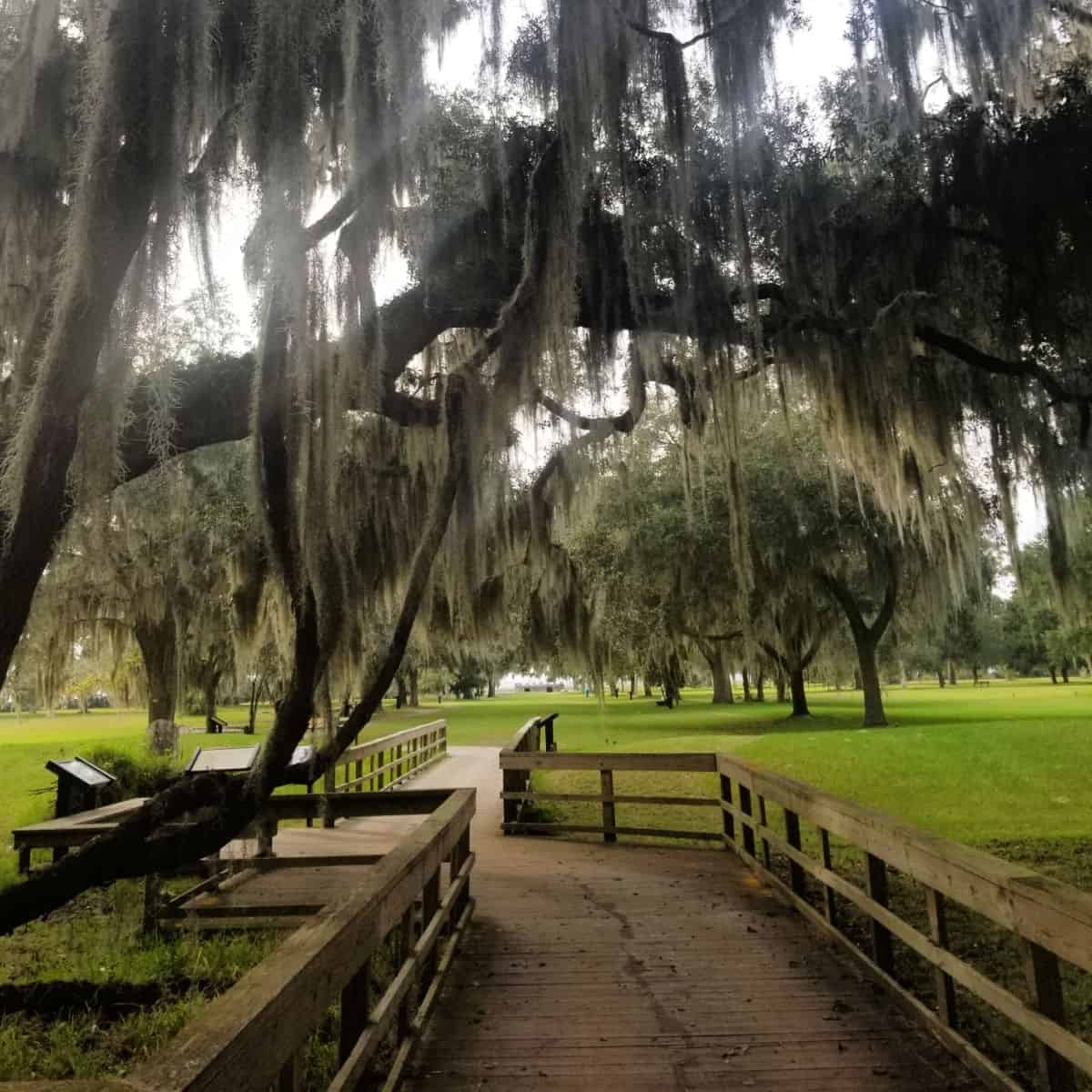
Fort Frederica National Monument
Top Things to do - Participate in a junior ranger program, Explore the historic area on a self-guided walking tour, Take a hike on the nature trail, Have a picnic in the picnic area, Watch the 23-minute movie History Uncovered in the visitor center theater, Look at artifacts and exhibits in the museum, Use the kayak launcher at the dinghy dock, Bring a book, and enjoy the peaceful nature of the park, Set up an easel and paint or sketch the natural surroundings
Lodging - Lodging options near Fort Frederica National Monument can be found on St. Simons Island, Georgia, and in the nearby town of Brunswick. Choices include hotels, resorts, vacation rentals, bed and breakfasts, and campgrounds in the area.
Camping- There are no campgrounds within the park.
Park Address - Fort Frederica National Monument, 6515 Frederica Rd., St. Simons Island, GA 31522
Fort Frederica is located in Southeastern Georgia approximately 75 miles south of Savannah. The park is open year-round and offers the opportunity to explore an archaeological site and museum.
James Oglethorpe who founded the British Colony of Georgia established a fortified town named Frederick after the Prince of Wales. The goal was to protect the southern boundary of the colony.
On St. Simon's Island, Fort Frederica troops defeated the Spanish in 1742 allowing Georgia to remain a British colony. This fight ended the Spanish hope of expanding northward along the Atlantic Coast.
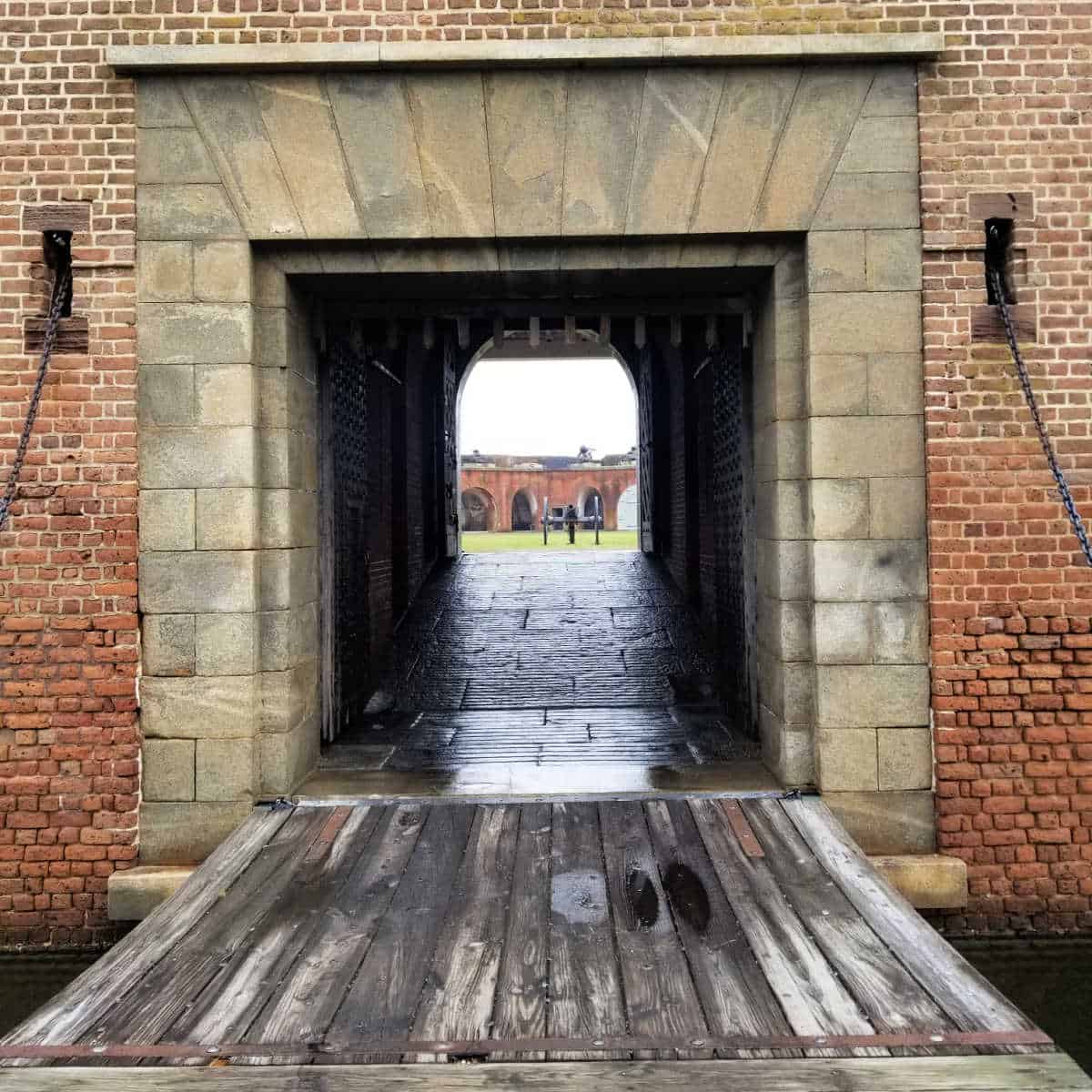
Fort Pulaski National Monument
Top Things to do - Sightseeing, Hiking, Kayaking, Bicycling, Visit the visitor center, Explore Nature trails, Photography, Ranger Led Tours
Lodging - There are no lodging facilities within the National Monument. There are various lodging options available in the nearby city of Savannah and its surrounding areas.
Camping- There are no camping within Fort Pulaski NM
Park Address - 101 Fort Pulaski Road, Fort Pulaski Visitor Center, Savannah, GA 31410
Fort Pulaski NM is located in Coastal Georgia approximately 15 miles east of Savannah. The park is open year-round and offers the opportunity to explore a historic fort, hike, and live cannon demonstrations.
More than 25 million bricks were used to construct Fort Pulaski. Robert E. Lee helped supervise the early construction of the fort. 30 years later he would return as Confederate general fighting against the United States.
Fort Pulaski was a key component of the Civil War. The Union forces realized they needed control of the fort to control the entrance to the Savannah River. Union forces started attacking the fort with cannon fire on April 10, 1862.
The Union forces focused their cannon fire on the corner wall for over 30 hours. The Confederate Colonel Charles Olmstead was forced to surrender. He knew that 40,000 pounds of ammunition were now exposed after all of the cannon fire.
Visitors can enjoy exploring the fort and the wetlands that are also part of the National Monument.
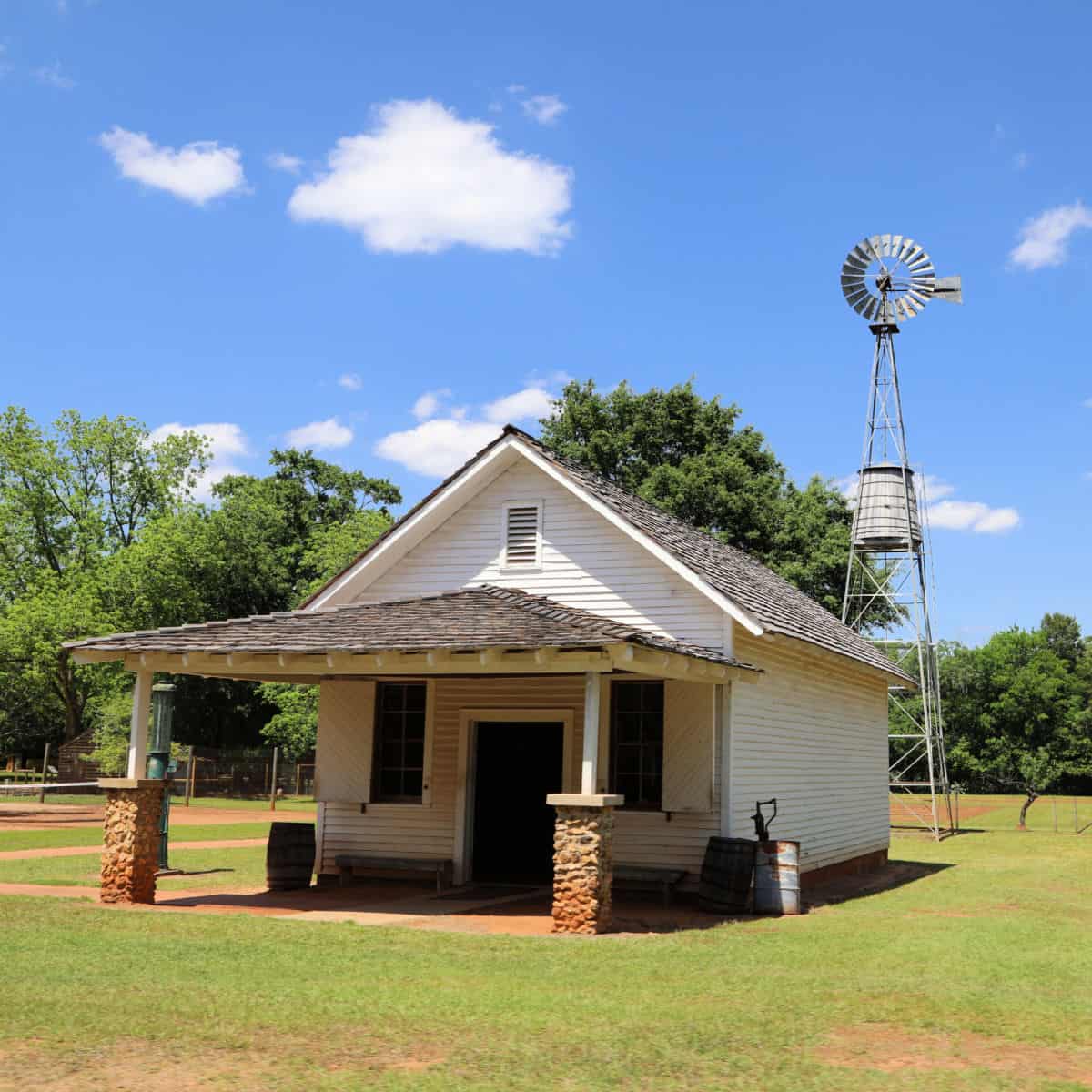
Jimmy Carter National Historical Park
Top Things to do - Take a Ranger-led or self-guided tour, look for butterflies in the Rosalynn Carter Butterfly Garden and Trail, Tour the Plains High School Visitor Center, walk around the Plains Historic District, and tor the Plains Train Depot which was the presidential campaign office for Jimmy Carter, explore the Jimmy Carter childhood farm.
Lodging - There is only one option for lodging in the town of Plains, that is the Plains Historic Inn and Antiques Mall
Camping- There is no camping within Jimmy Carter National Historical Park
Park Address - 300 North Bond Street, Plains, GA. 31780
Jimmy Carter NHP is located in Southwestern Georgia approximately 90 miles southwest of Macon. The park is open year-round and offers the opportunity to visit the Plains High School which serves as the visitor center, the train depot, and Jimmy Carter's boyhood home and farm.
Take a step back in time and come to visit the home of the 39th president in Plains, Georgia. The Carter administration placed great importance on human rights and public service. Allow time in your visit to this historic site to visit the Rosalynn Carter Gallery, The Carter Center, and the Carter Presidential Library and Museum.
Don't miss the large smiling peanut that is now at a gas station near Plains. This smiling peanut was part of the promotional items used during Jimmy Carter's presidential election.
It is not to be a missed photo opportunity. Because honestly where else are you going to see a giant smiling peanut. LOL!
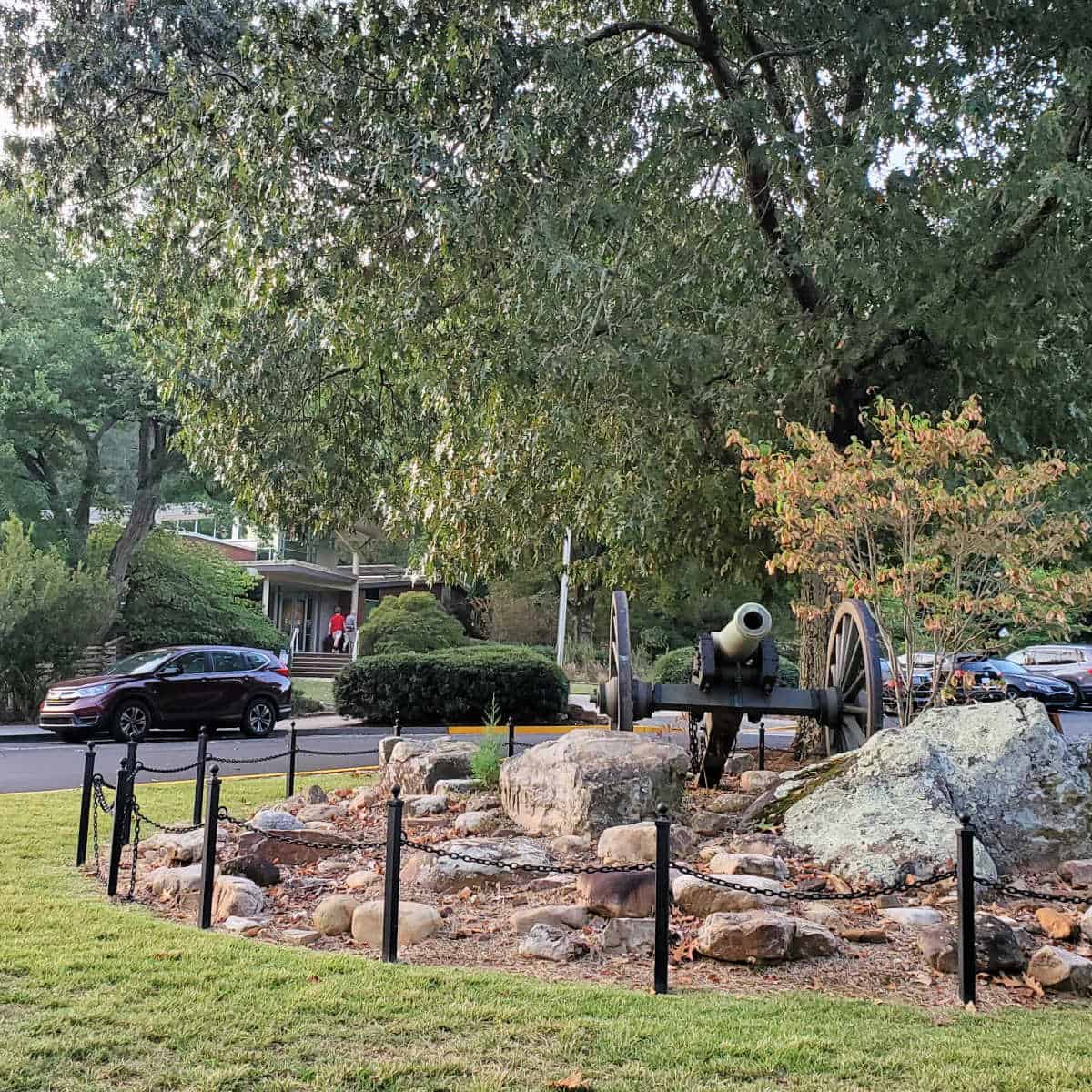
Kennesaw Mountain National Battlefield Park
Top Things to do - Take a Hike, Follow a Ranger-Led Hike, Horseback Riding, Enjoy a Picnic, Go Birding, Explore by Vehicle, view Park Movie, Junior Ranger Program, Museum Tours
Lodging - There is no lodging within the park itself. However, there are lodging options available in the nearby city of Marietta and its surrounding areas.
Camping- There are no campgrounds within Kennesaw Mountain National Battlefield Park
Park Address - 900 Kennesaw Mountain Dr, Kennesaw, GA 30152
Located near Atlanta, Georgia Kennesaw Mountain is a 2,965-acre National Battlefield that preserves a Civil War battleground. There are a ton of trails you can explore along with a large visitor center. Don't miss the fall leaves for epic photos. Make sure to plan time for Atlanta traffic when heading to this park.
Kennesaw Mountain Battlefield was the site of a key battle during the Atlanta campaign. From June 19 to July 2, 1864, some of the bloodiest battles during Union Major General William T. Sherman's advance towards Atlanta happened at Kennesaw Mountain and the surrounding area.
Today the park is incredibly popular with local visitors who hike up and down the mountain. There are 20 miles of hiking trails within the park along with a great visitor center.
Kennesaw Mountain NBP is not only one of the most popular National Parks in Georgia it is one of the most visited national parks in the US.
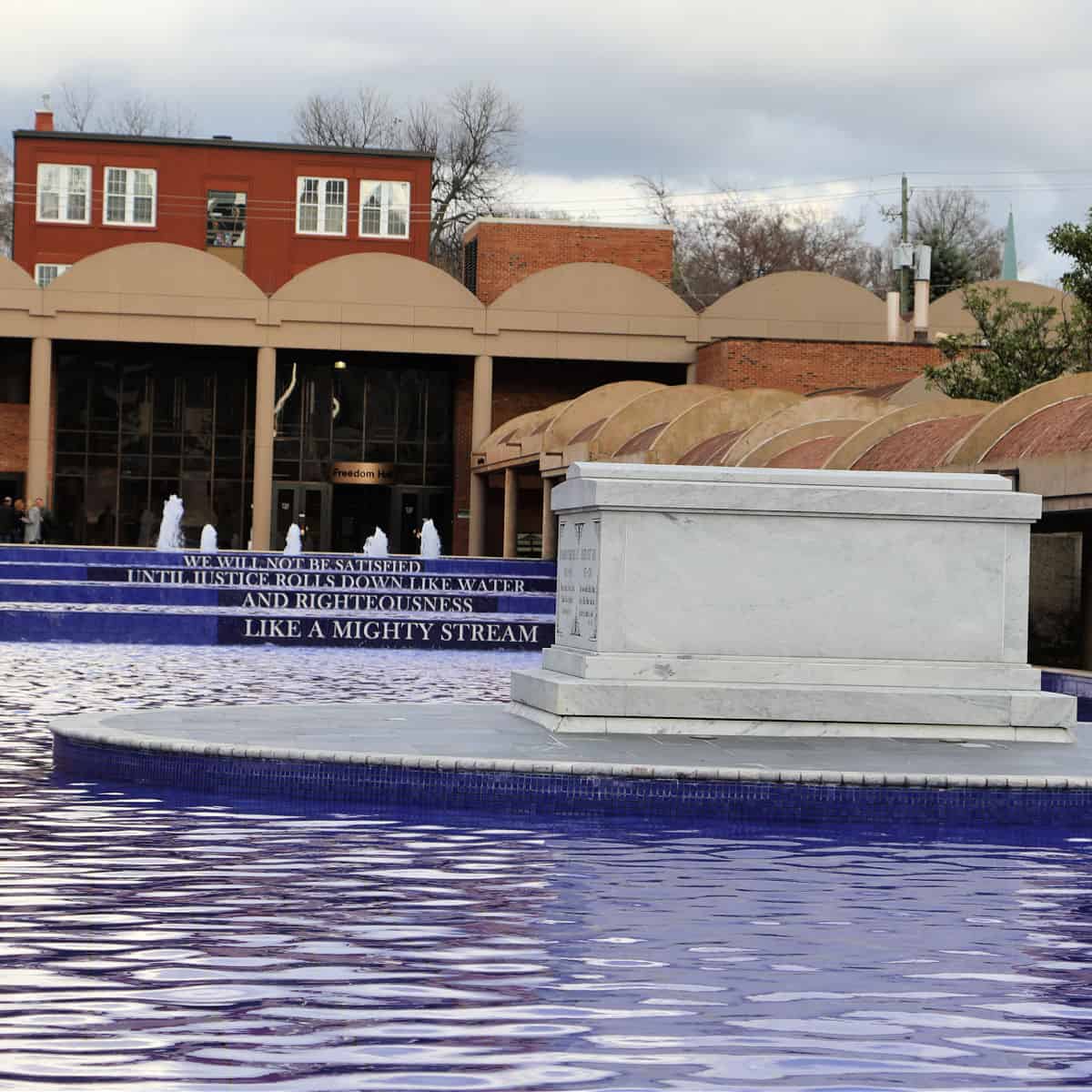
Martin Luther King Jr. National Historical Park
Top Things to do -Birth Home Tours, visit DREAM Gallery, BEHOLD Monument, "I Have A Dream" World Peace Rose Garden, Historic Fire Station No. 6, Historic Ebenezer Baptist Church, The King Center
Lodging - Martin Luther King Jr. National Historical Park in Atlanta, Georgia, does not offer lodging within the park. Visitors can choose from various lodging options within Atlanta's downtown and midtown areas, or in nearby neighborhoods like Inman Park and Grant Park. There are hotels near Hartsfield-Jackson Atlanta International Airport for those who prefer proximity to the airport.
Camping- There are no camping opportunities within the park
Park Address - 450 Auburn Avenue, NE, Atlanta 30312
Martin Luther King Jr. NHP is located in downtown Atlanta. The park is open year-round and offers the opportunity to learn more about Martin Luther King Jr.
The park protects and interprets sites that were connected to Martin Luther King Jr.'s life. The visitor center is filled with exhibits and presentations about not only MLK Jr. but also the American Civil Rights Movement.
Ebenezer Baptist Church located across the street from the visitor center is where Martin Luther King Jr.'s father preached, where he was baptized, and where he joined his father as a co-pastor in 1960.
The King Center is also across the street from the visitor center and includes exhibits about King's life and work in Freedom Hall. This is the location of Mr. & Mrs. King's gravesites, eternal flame, and reflecting pool.
Atlanta's oldest surviving firehouse the 1894 Fire Station #6 is located down the street from the visitor center. Here you can see displays on the desegregation of the city's fire department.
King Birth Home is located at 501 Auburn Avenue just down from the Visitor Center. This is the home where Martin Luther King Jr. was born in 1929. He lived here until the age of 12. Tours are offered of the birth home but you will want to make sure to sign up for one as soon as you visit the visitor center. They are extremely popular and do fill up.
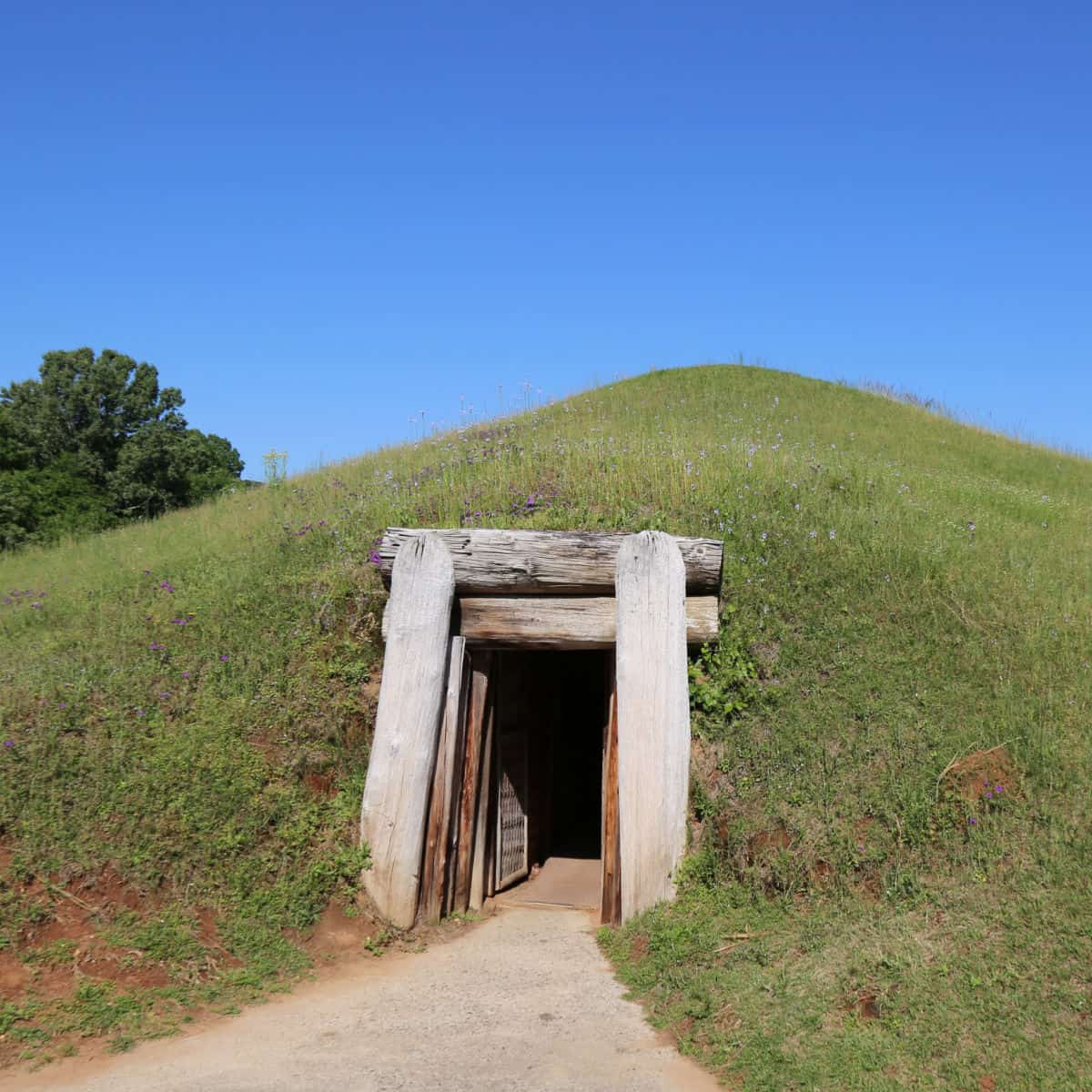
Ocmulgee Mounds National Historical Park
Top Things to do - Visit the Visitor Center, Explore the Park Trails
Lodging - There are no lodging facilities within the park. However, there are lodging options available in the city of Macon and its surrounding areas.
Camping- There is no camping within the park
Park Address - 1207 Emery Hwy, Macon, GA 31217
Ocmulgee Mounds NHP is located in Central Georgia on the eastern edge of Macon. The park is open year-round and offers the opportunity to visit an archaeological site, hiking, and a visitor center.
12,000 years of history from the ice age hunters of the Pleistocene Epoch to the European Exploration and the Revolutionary War have happened in the area of Ocmulgee Mounds.
Today the park showcases ceremonial mounds including the 50-foot high Great Temple Mound. There are more than 5 miles of trails for exploring the woods and fields around the site.
The visitor center is a art modern building that has exhibits and a park movie.
List of Georgia National Parks
- Andersonville National Historic Site
- Appalachian National Scenic Trail (Georgia to Maine)
- Chattahoochee River National Recreation Area
- Chickamauga and Chattanooga National Military Park (also Tennessee)
- Cumberland Island National Seashore
- Fort Frederica National Monument
- Fort Pulaski National Monument
- Jimmy Carter National Historical Park
- Kennesaw Mountain National Battlefield Park
- Martin Luther King Jr National Historical Park
- Ocmulgee Mounds National Historical Park
Affiliated Sites
- Arabia Mountain National Heritage Area
- Augusta Canal National Heritage Area
- Gullah/Geechee Cultural Heritage Corridor (FL, GA, NC, SC)
- Trail of Tears National Historic Trail (AL, AR, GA, IL, KY, MO, NC, OK, TN)
There are 11 Georgia National Parks with over 7.2 million visitors a year. The National Park Service estimates that this brings in over $581 million dollars in economic benefits each year.
The National Parks in Georgia include 3 National Heritage Areas, 2 National Trails, 2,146 National Register of Historic Place Listings, 49 National Historic Landmarks and 11 National Natural Landmarks.
There are 4,615,979 objects protected in the National Park Museums Collection in Georgia. The National Parks in Georgia include 299 Archaeological Sites.
If you have dreamed of working in the National Parks make sure and check out our article on How to Become a Park Ranger. Working in the parks is one of the most amazing jobs you can find. There is just something special about waking up and knowing you are going to work in a beautiful park.
Additional National Park Travel Resources
Learn more about National Park Passes for parks that have an entrance fee.
$80.00 - For the America the Beautiful/National Park Pass. The pass covers entrance fees to all US National Park Sites and over 2,000 Federal Recreation Fee Sites for an entire year and covers everyone in the car for per-vehicle sites and up to 4 adults for per-person sites.

Buy your pass at this link, and REI will donate 10% of pass proceeds to the National Forest Foundation, National Park Foundation, and the U.S. Endowment for Forestry & Communities.
National Park Free Entrance Days -Mark your calendars with the five free entrance days the National Park Service offers annually.

For a fun adventure check out Escape Campervans. These campervans have built in beds, kitchen area with refrigerators, and more. You can have them fully set up with kitchen supplies, bedding, and other fun extras. They are painted with epic designs you can't miss!
Escape Campervans has offices in Vancouver, Seattle, Portland, San Francisco, Las Vegas, Los Angeles, Phoenix, Salt Lake City, Denver, New York, and Orlando
National Parks in neighboring states
National Parks in North Carolina
National Parks in South Carolina
For an entire list of US National Parks head over to our list of US National Parks in Alphabetical Order.
We also have a printable checklist of all 419 National Park properties in the United States available.
Make sure to follow Park Ranger John on Facebook, Instagram, Pinterest, and TikTok
